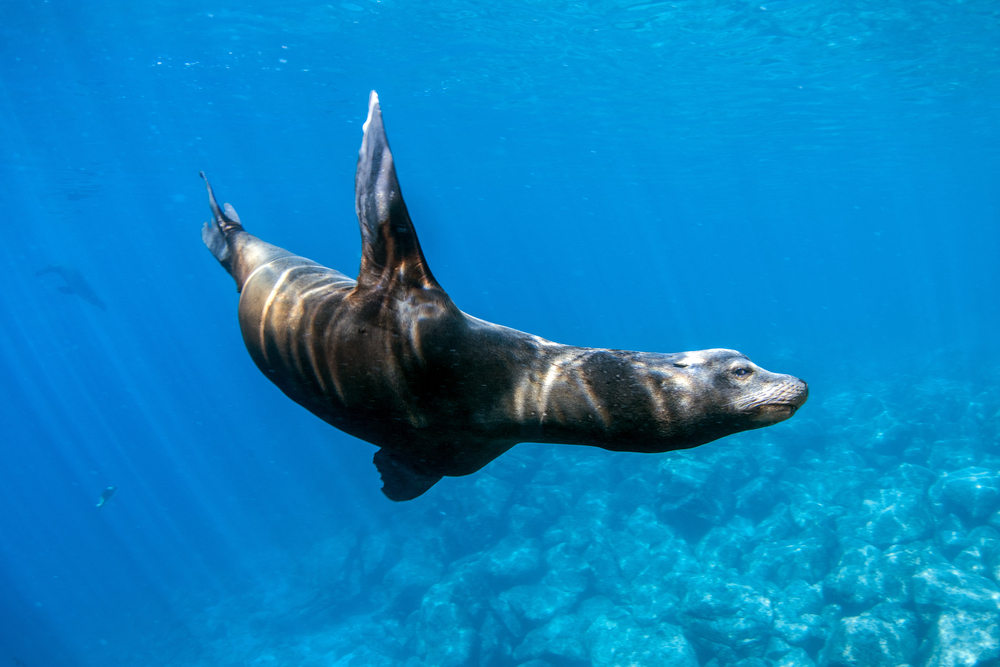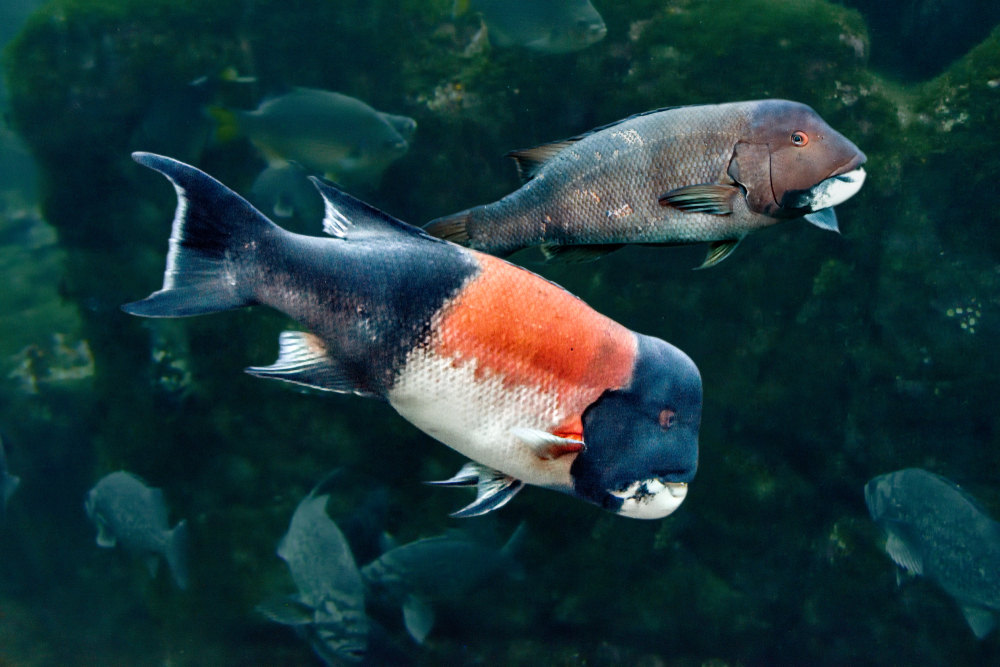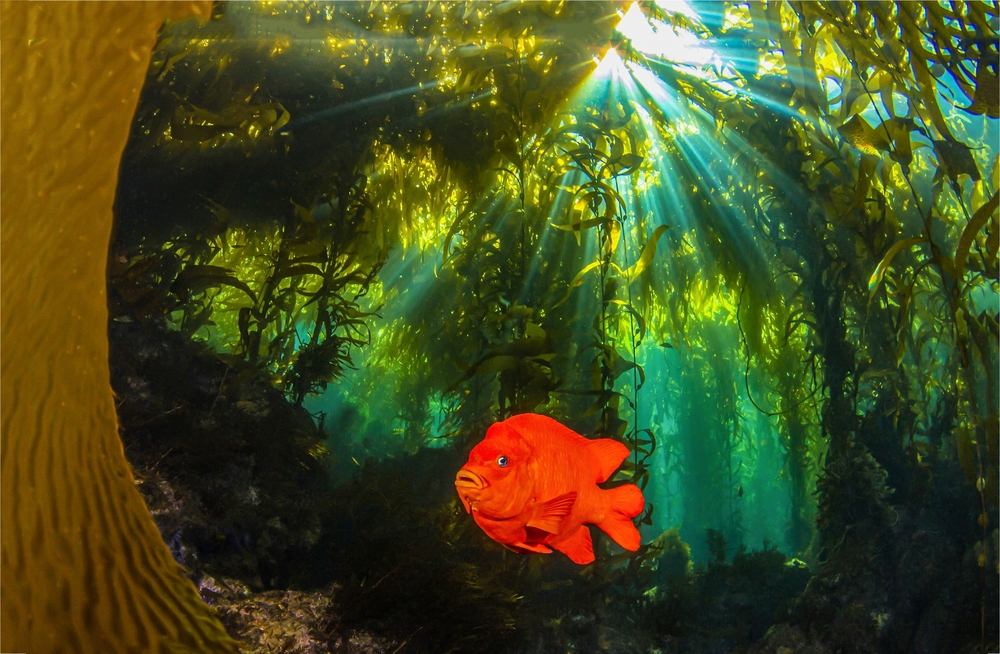La Jolla is a popular destination for scuba diving. The area is home to an abundance of marine life, making it a fascinating place to explore the depths of the Pacific Ocean. If you’re looking for an amazing place to go scuba diving, La Jolla is a great place! In this blog, we’ll take a look at the top 5 most fascinating sea creatures you might encounter while scuba diving in La Jolla.
Garibaldi
Garibaldi is the official state fish of California and is commonly found in the kelp forests of La Jolla. These fish are easily recognizable due to their bright orange coloration, which stands out against the greenish-brown kelp. Garibaldi are relatively small, reaching only about 12 inches in length, but their territorial nature makes them a fascinating sight to behold. They are known to be very protective of their nests and will aggressively defend their territory against any perceived threats. But don’t worry; they’re usually not aggressive toward humans unless they feel threatened or provoked. It is important to remember that all wild animals can be unpredictable, and it is best to maintain a safe distance and avoid disturbing them in their natural habitat. If you are diving in areas where Garibaldi fish are present, it is recommended that you give them their space and avoid making sudden movements that may startle them.
California Sea Lions
California sea lions are a common sight in La Jolla, often seen lounging on the rocky shores. But it’s underwater where they truly shine. These playful creatures are known for their acrobatic abilities and are often seen swimming and playing with each other. California sea lions are also curious animals and may approach divers to investigate. They are known for their vocalizations, which can be heard underwater, adding to the magical experience of diving with these creatures.

Round Stingray
Round stingrays are a unique species found in the sandy bottom areas of La Jolla. They have a circular shape and can reach up to 22 inches in diameter. These creatures are not aggressive, but they do have a venomous spine on their tail, so divers should take care not to disturb them. Round stingrays are fascinating to watch as they glide effortlessly across the sandy bottom, often partially buried in the sand.
Leopard Sharks
Leopard sharks are a common sight in the shallow waters of La Jolla during the summer months. These sharks are harmless to humans and can reach up to 6 feet in length. They are named for their distinctive pattern of spots and stripes, which resembles that of a leopard. Diving with these graceful creatures is a once-in-a-lifetime experience, as they move elegantly through the water, seemingly without a care in the world.
California Sheephead
The California Sheephead is a striking fish with a unique appearance. The males have a bright red head and body, while the females are more camouflaged with the environment. These fish can reach up to 3 feet in length and are commonly found in the rocky reef areas of La Jolla. They are a popular target for spearfishing, but as a scuba diver, you can appreciate their beauty and unique behavior, such as their ability to change their sex as they age.

Scuba diving in La Jolla offers an incredible opportunity to witness some of the most fascinating sea creatures on the planet. From the playful California sea lions to the striking California Sheephead, the diversity of marine life in this area is truly remarkable. Whether you’re an experienced diver or a beginner, a trip to La Jolla is a must-do for any lover of the ocean. If you’re planning on hitting the waters soon here in La Jolla, book a dive with us here at San Diego Scuba Guide. Failing to do so will mean failing to get the best underwater scuba diving tour. We offer the finest educational and fun dives in La Jolla Cove. Book a trip with us today by calling (858) 397-8213 or by clicking here.


